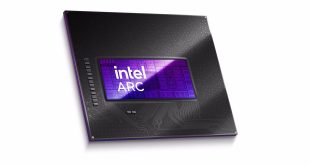Unigine provides an interesting way to test hardware. It can be easily adapted to various projects due to its elaborated software design and flexible toolset. A lot of their customers claim that they have never seen such extremely-effective code, which is so easy to understand.
Heaven Benchmark is a DirectX 11 GPU benchmark based on advanced Unigine engine from Unigine Corp. It reveals the enchanting magic of floating islands with a tiny village hidden in the cloudy skies. Interactive mode provides emerging experience of exploring the intricate world of steampunk.
Efficient and well-architected framework makes Unigine highly scalable:
- Multiple API (DirectX 9 / DirectX 10 / DirectX 11 / OpenGL) render
- Cross-platform: MS Windows (XP, Vista, Windows 7) / Linux
- Full support of 32bit and 64bit systems
- Multicore CPU support
- Little / big endian support (ready for game consoles)
- Powerful C++ API
- Comprehensive performance profiling system
- Flexible XML-based data structures
We use the following settings: 1920×1080 resolution. Anti Aliasing off. Anisotrophy 4, Tessellation normal. Shaders High. Stereo 3D disabled. API: Direct X 11.
The Zotac GTX670 is the clear performance winner in this benchmark at these settings, averaging 75.4 frames per second. The GTX660ti scores very well, especially considering the modest price point. At the bottom of the chart, the HD7770 and GTX650 struggle in some of the more intensive sections of this test.
 KitGuru KitGuru.net – Tech News | Hardware News | Hardware Reviews | IOS | Mobile | Gaming | Graphics Cards
KitGuru KitGuru.net – Tech News | Hardware News | Hardware Reviews | IOS | Mobile | Gaming | Graphics Cards














Fantastic reading thanks GTX660ti all the way for me !
I have wanted the HD7950 now for quite a while, but cant afford it. ive decided to wait until the next gen, later this year. good article, shows the good GTX660ti performance well.
Im very happy with my HD7870, will do me for some time, and when it doesn’t ill pick one up cheap to CF them,
Now this will totally affect my decision on buying a vga
GTX670 is great, but GTX660 ti is the bargain right now. I like that Sapphire card though, im sick of fan noise 🙁
Good article, very helpful as im thinking of buying one for my new system soon.
Greg, you might want to look at the Asus Direct CUII version of the GTX660Ti – I got one recently to replace a Gainward GTX260GS and the reduction in fan noise is astonishing.
I agree with Andrew. Even though the Gainward GFX cards are very durable, but if you want high quality Nvidia cards that are also silent you should look at the ASUS cards with the Direct CUII cooling solution. It’s really no comparison.
Kitguru said: “Today’s article won’t be featuring the AMD HD7970, HD7990 or Nvidia GTX680 or GTX 690/Titan. Not because we don’t like them, but because very few people can afford to buy them.”
This seems very disingenuous. There’s hardly any difference between the avg. 670 and 7970 prices. Does put nVidia at the top of the charts with the O/C’d 670 though. :
Well its not meant to be disingenuous. the GTX680 is the flagship to battle against the HD7970. If we included the HD7970 then we would need to include the GTX680, sometimes seen for £350.
The point was to try and get a variety of cards and not focus on the flagship single GPU cards.
Bear in mind the GTX670 didn’t get a top award in this test, due to the pricing. The Sapphire HD7950 Vapor X did due to cost, cooling, noise etc.